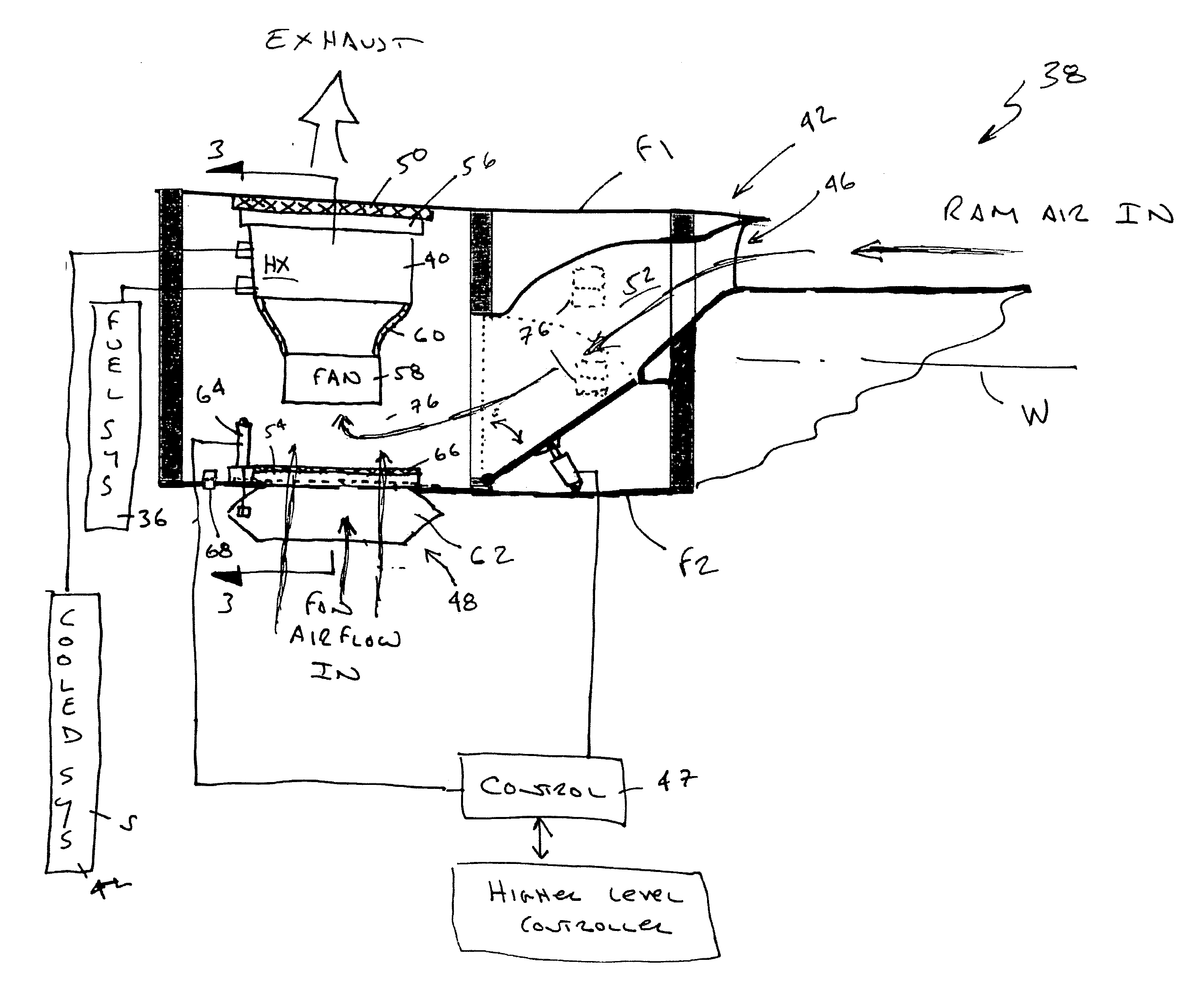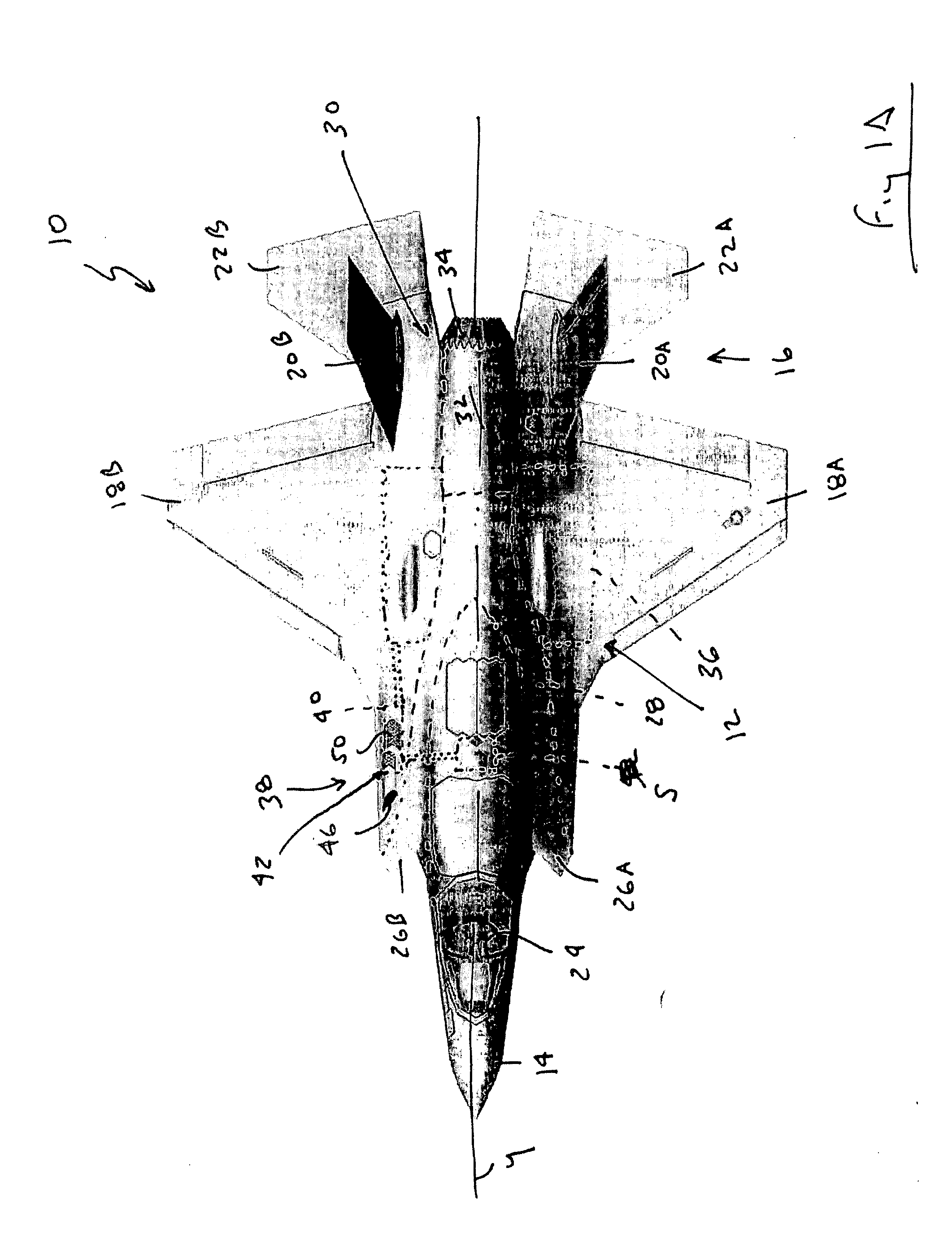Aircraft thermal management system with reduced exhaust re-ingestion
a technology of thermal management system and gas turbine engine, which is applied in the direction of machines/engines, mechanical equipment, transportation and packaging, etc., can solve the problems of complicated effective thermal management, so as to enhance cooling airflow and minimize leakage and pressure loss
- Summary
- Abstract
- Description
- Claims
- Application Information
AI Technical Summary
Benefits of technology
Problems solved by technology
Method used
Image
Examples
Embodiment Construction
[0016]FIG. 1A illustrates an exemplary aircraft 10 which defines a longitudinal axis Y. The aircraft 10 includes an airframe 12 with a nose section 14, a tail section 16, wings 18A and 18B, vertical stabilizers 20A, 20B, and horizontal stabilizers 22A and 22B. Other features include a cockpit 24, engine inlets 26A and 26B which join to form an engine inlet duct 28. Although a particular aircraft configuration is illustrated in the disclosed embodiment, other aircraft types will also benefit from the present invention.
[0017]A propulsion system 30 generally includes a turbofan engine 32 in communication with duct 28. The engine 32 includes an exhaust nozzle section 34 generally between the horizontal stabilizers 22A, 22B. A fuel system 36 communicates with the propulsion system 30.
[0018]A thermal management system 38 includes a multitude of heat exchangers 40 (only one shown) in communication with the fuel system 36. The heat exchanger 40 facilitates the rejection of thermal loads fro...
PUM
 Login to View More
Login to View More Abstract
Description
Claims
Application Information
 Login to View More
Login to View More - R&D
- Intellectual Property
- Life Sciences
- Materials
- Tech Scout
- Unparalleled Data Quality
- Higher Quality Content
- 60% Fewer Hallucinations
Browse by: Latest US Patents, China's latest patents, Technical Efficacy Thesaurus, Application Domain, Technology Topic, Popular Technical Reports.
© 2025 PatSnap. All rights reserved.Legal|Privacy policy|Modern Slavery Act Transparency Statement|Sitemap|About US| Contact US: help@patsnap.com



